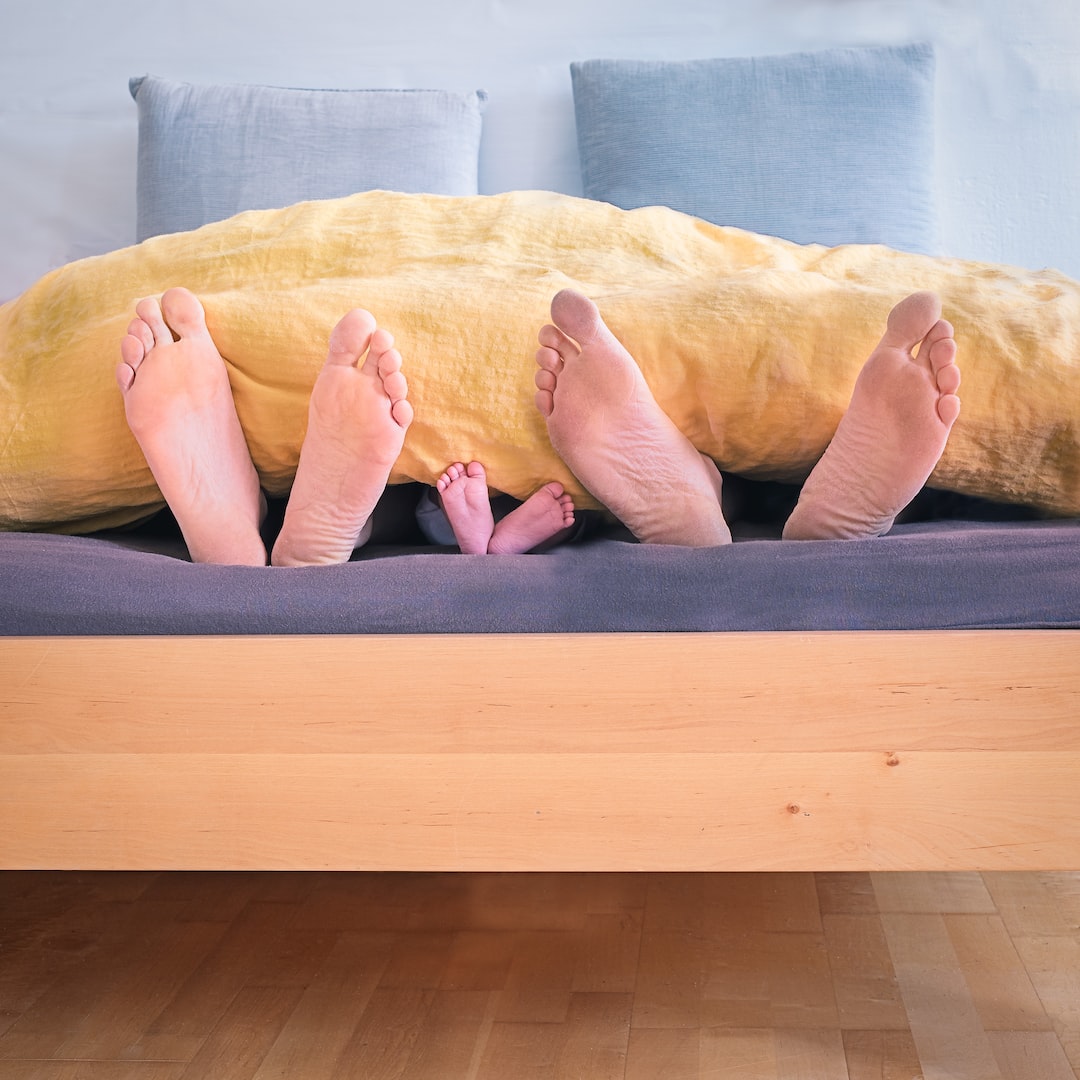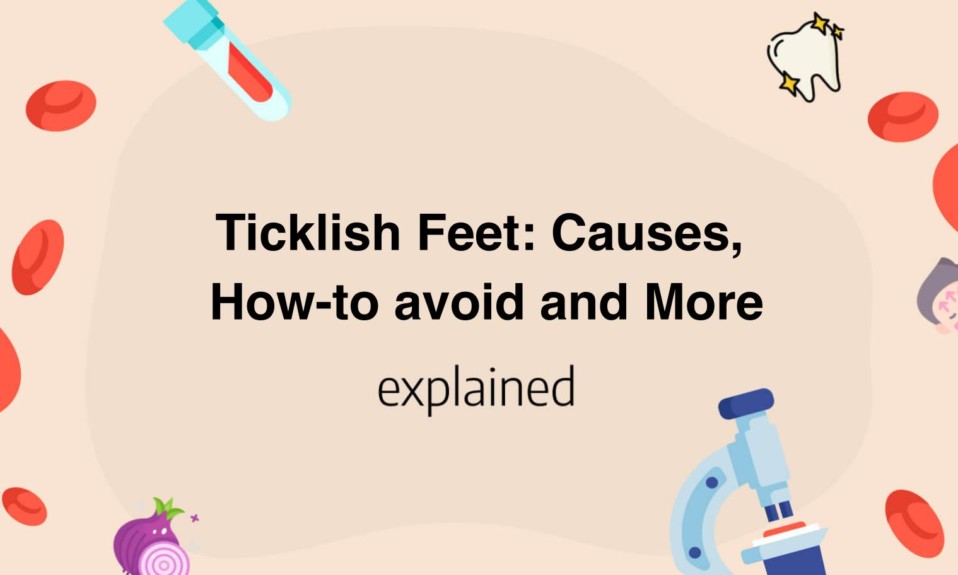Ticklish feet can be a source of amusement or annoyance, but there are several underlying causes to consider.
Some people may experience ticklishness due to nerve sensitivity, while others may be triggered by light touch or pressure.
To avoid the discomfort, try wearing cushioned socks or practicing relaxation exercises.
Keep reading to discover more tips on how to prevent and treat ticklish feet.
Understanding the Science Behind Ticklish Feet
The sensation of tickling is often described as both pleasurable and uncomfortable.
Ticklishness is most commonly associated with the feet, but can also occur in other parts of the body.
The science behind ticklish feet involves the interplay of our somatosensory and motor systems.
The somatosensory system is responsible for interpreting sensory information from our skin, muscles, and joints.
When we experience tickling, it activates the nerves in our skin which send signals to the brain.
The motor system is responsible for responding to these signals and initiating a physical response.
In the case of tickling, this often results in involuntary movements such as laughter or flinching.
Scientists believe that ticklishness may have evolved as a form of social bonding.
Tickling elicits laughter and positive emotions which can help to strengthen social relationships.
However, some people are less ticklish than others, and some are completely not ticklish at all.
This can be due to individual differences in the way our brains process sensory information.
It can also be influenced by environmental factors such as previous experiences with tickling or cultural attitudes towards the sensation.
In terms of health and wellness, there are various theories about the benefits of tickling.
Some experts suggest that it can help to reduce stress by releasing endorphins and promoting relaxation.
Others caution that tickling can be a form of physical and emotional discomfort, and that it should always be done in a consensual and respectful manner.
If you are ticklish and want to minimize the sensation, you can try desensitizing exercises such as rubbing and pressing on the soles of your feet.
Alternatively, if you enjoy tickling as a form of play or affection, be sure to communicate your boundaries and preferences with your partner.
In conclusion, ticklishness is a complex and fascinating phenomenon with both physical and social dimensions.
While the science behind ticklish feet is still not fully understood, researchers continue to explore the mechanisms that contribute to the sensation.
Whether you love it or hate it, tickling is an integral part of our sensory experience and a reminder of the nuances of the mind-body connection.

Natural Remedies That Can Help Alleviate Ticklish Feet
Keeping your feet clean and dry is crucial in preventing tickling sensations.
However, if your feet still feel ticklish, there are natural remedies that can help alleviate the discomfort.
One top remedy for ticklish feet is the use of peppermint oil.
Peppermint oil is known for its soothing properties, as well as its cool sensation that can help relax the nerves on your feet.
Simply mix a few drops of peppermint oil with water and apply to your feet before bedtime.
Another natural remedy that’s effective in reducing ticklishness is Epsom salt, which can help relieve inflammation and aching feet.
Mix Epsom salt with warm water and soak your feet for about 20 to 30 minutes.
Essential oils, such as lavender and chamomile, can also be used to alleviate foot tickles.
These oils have calming properties that can help soothe nerve endings and promote relaxation.
You can add a few drops of these oils to a foot bath or mix them with a carrier oil to apply directly to your feet.
Additionally, practicing yoga or pilates can also help improve circulation and nerve function in your feet, which can reduce tickling sensations.
Be sure to stretch your feet regularly and practice proper foot alignment during exercise to prevent discomfort.
In conclusion, ticklish feet can be uncomfortable, but there are natural remedies that can help alleviate the sensation.
Incorporate these remedies into your daily routine and see if they help alleviate your foot tickles.
Mindfulness as a Potential Solution to Ticklish Feet
Mindfulness is a state of being in which one focuses on the present moment, without judgment.
This practice has shown to be an effective solution for ticklish feet.
Ticklish feet can be a frustrating and uncomfortable sensation, often causing anxiety or avoidance of foot-related activities.
Through mindfulness techniques, individuals can learn to recognize and manage the sensations associated with ticklish feet.
One method is to focus on the breath, bringing attention to the sensation of air flowing in and out of the body.
This can help to ground the individual in the present moment, reducing the intensity of ticklish sensations.
Another technique is to bring attention to the sensation itself, without judgment or avoidance.
By accepting the sensation as it is, individuals can reduce the stress and anxiety associated with ticklish feet.
Practicing mindfulness not only helps with ticklish feet but also has other health benefits.
Studies have shown that mindfulness can reduce anxiety and depression, improve focus and concentration, and lower blood pressure.
It has also been shown to reduce stress-related illnesses, such as heart disease and diabetes.
By incorporating mindfulness into daily life, individuals can improve their overall well-being.
In addition to mindfulness, there are other strategies that can help with ticklish feet.
Wearing socks or shoes that provide a comfortable fit can reduce the intensity of ticklish sensations.
Regular foot massages or reflexology can also help to reduce ticklishness and increase relaxation.
- Some individuals may benefit from using a vibration therapy device to reduce ticklishness and increase circulation.
- Others may benefit from yoga or other bodywork practices that promote relaxation and mindfulness.
In conclusion, mindfulness is a potential solution to ticklish feet, helping individuals to manage the sensations associated with this common condition.
With practice and patience, individuals can incorporate mindfulness into their daily lives, improving their overall well-being.
Other strategies, such as appropriate footwear or massage, can also provide relief from ticklishness.
By taking a holistic approach to health, individuals can find solutions to health challenges and improve their overall quality of life.
You’ll also like: Buck Teeth: Causes, Treatments, and Prevention
Foot Massage Techniques to Help Manage Ticklish Feet
Foot massage techniques can be very helpful in managing ticklish feet.
Ticklish feet can be a real challenge when it comes to massages, but with the right techniques, it is possible to ease the ticklishness and provide a relaxing experience.
The following are some techniques that can be helpful:
- Start with gentle strokes: When massaging ticklish feet, it’s important to start with gentle strokes and gradually increase the pressure. This gives your feet time to adjust to the sensation, reducing the ticklishness.
- Focus on the arches of your feet: The arches of your feet contain several pressure points that relieve stress and tension. Applying gentle pressure to these points can also help to ease ticklishness.
- Massage with a warm oil: Warm oil can help to relax the muscles in your feet and make them less ticklish. Apply a small amount of oil to your feet before starting the massage and gently massage it into your skin.
Remember to choose an oil that is suitable for your skin type.
In addition to these techniques, it’s important to choose the right massage tool for ticklish feet.
Soft massage balls or rollers can be helpful as they provide a gentle massage that is less likely to tickle.
You can also ask your massage therapist to use a light touch when massaging your feet.
When massaging ticklish feet, it’s important to take your time and focus on relaxation rather than the ticklishness.
If you do start to feel ticklish, take a deep breath and try to relax.
Don’t be afraid to ask your therapist to adjust their technique to suit your needs.
By using these techniques and tools, you can manage ticklish feet and enjoy a relaxing massage experience.
Remember, the key is to start gently, focus on the arches of your feet, and use a warm oil.
With a little practice, you can overcome the ticklishness and experience the benefits of foot massage.
You’ll also like: How to Crack Your Neck: Benefits & Safety
Yoga and Stretching Exercises that Can Help with Ticklish Feet
Are your feet feeling ticklish but painful too? Did you know that yoga and stretching exercises are a great way to alleviate this discomfort? Yoga poses such as Downward Dog, Cobra, and Upward Dog stretch and strengthen the feet muscles, reducing the sensation of tickling.
Additionally, gentle foot massages and rubbing your feet with a tennis ball can also help to alleviate the ticklish sensation.
When it comes to stretching, focusing on the calves, ankles, and toes can reduce the likelihood of ticklishness.
For example, the seated calf stretch loosens up your calf muscles, while the ankle stretch helps to improve flexibility and reduce stiffness.
You can also stretch your toes by manually spreading them apart and holding them for several seconds, then releasing and repeating the process.
Incorporating foot stretches into your daily routine not only helps to reduce ticklishness, but also improves overall foot health.
They can minimize the risk of plantar fasciitis, an inflammation of the tissue at the bottom of the foot, and Achilles tendonitis, an injury to the tendon that connects your calf muscles to your heel.
It’s important to remember that if your feet feel more than just ticklish – such as painful or numb – it’s essential to consult a healthcare professional.
They can help to diagnose and treat any underlying conditions.
Take care of your feet and incorporate some Yoga poses and stretching exercises into your daily routine to alleviate ticklish sensations and improve your foot health.
You’ll also like:










